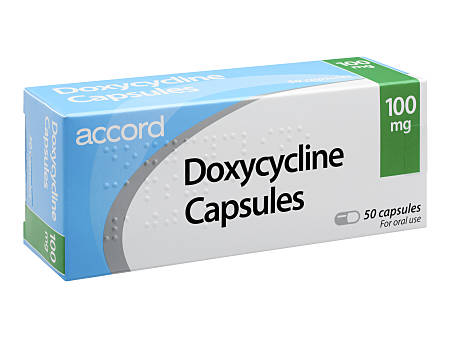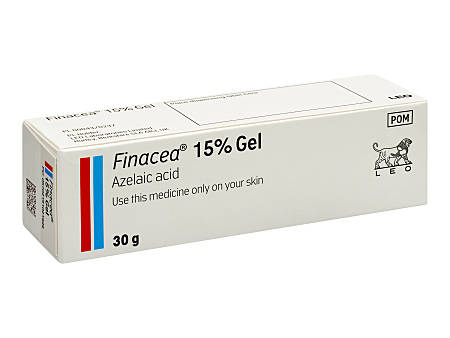
Perioral Dermatitis Treatment
Request effective prescription treatments to help clear up the symptoms of perioral dermititis.
-

Request treatment quickly without any face-to-face appointments
-

Effective treatments to help clear up periorificial dermatitis
-

Free delivery as standard
Perioral dermatitis is a skin condition that causes a red rash around the mouth, but it can spread to other parts of your body. While its exact cause is unknown, it’s most common in women between 15 and 45, but it can affect anyone. Treatment for perioral dermatitis is very effective, but it can take a few weeks to months for the condition to clear up.
If you need treatment for perioral dermatitis, our doctors can help. Simply complete a short consultation to make sure it’s safe and suitable for you.

Medically reviewed by
Dr Babak AshrafiLast reviewed: 06 Mar 2023
Available treatments





Please check your spelling or try another treatment name.
Delivery Options
How it Works



About Perioral Dermatitis
What is perioral dermatitis?
Perioral dermatitis is a type of dermatitis (inflammation of the skin). It is most common around the mouth but can also spread to other parts of the body, such as the nose, eyes and, rarely, the genitals.
Perioral dermatitis that occurs in areas other than around the mouth is known as periorificial dermatitis. The condition is not contagious, meaning it cannot be passed from one person to another.
What does perioral dermatitis look like?
Perioral dermatitis appears as a bumpy red rash that may also be dry, scaly, or flaky. The small bumps on the skin contain pus or clear fluid and may itch or burn. Perioral dermatitis is often mistaken for acne.
What causes perioral dermatitis?
The exact cause of perioral dermatitis is not known, but the most common cause appears to be the overuse of a medication called topical corticosteroids. Topical corticosteroids are a type of cream or ointment that is applied to the skin to reduce inflammation. They are commonly used to treat skin conditions such as eczema.
Other possible causes of perioral dermatitis include:
- cosmetics, skin products and facial sun creams
- fluoride toothpaste
- chewing gum
- exposure to strong winds and ultraviolet (UV) light
- hormonal fluctuations
- an overgrowth of bacteria or yeast that live on the skin
- the oral contraceptive pill
How does perioral dermatitis treatment work?
Perioral dermatitis is normally treated with antibiotic or anti-inflammatory medications. Antibiotics work by killing bacteria or stopping them from growing and spreading. It is not clear how antibiotics work in treating perioral dermatitis as the condition is not caused by a bacterial infection, but they may work by reducing inflammation. Another ‘off-label’ treatment for perioral dermatitis is pimecrolimus cream (Elidel), which works by reducing skin inflammation such as redness, swelling and itching. Some medications we prescribe for conditions or circumstances that are outside of the licence are also known as ‘off-label’. Prescribing ‘off-label’ is a common practice by healthcare professionals to ensure a medication can safely benefit as many patients as possible. This is always based on updated information and evidence since the product first became available.
How effective is perioral dermatitis treatment?
Treatment for perioral dermatitis is normally effective, though it may take several weeks or months to work. Untreated perioral dermatitis often takes years to clear up and, in some cases, may be permanent.
How long does it take for perioral dermatitis treatment to work?
Antibiotic treatment normally improves symptoms of perioral dermatitis within 6 to 12 weeks. One study found that treatment with pimecrolimus cream improved perioral dermatitis rash within 4 weeks.
Can perioral dermatitis come back after treatment?
Perioral dermatitis may come back after treatment, but this is unlikely if you avoid triggers such as corticosteroid cream.
What perioral dermatitis treatments are there?
The first step in treating perioral dermatitis is to stop using whatever caused the condition in the first place. You should stop using any cosmetics or skin care products on your face and wash your face with warm water alone until your skin has healed. You should also avoid using fluoride toothpaste and stop using any over-the-counter treatments that contain corticosteroids. If you are using prescription creams or ointments containing corticosteroids, check with your GP before stopping treatment. Your perioral dermatitis may flare up after you stop using topical corticosteroids, and the condition often gets worse before it gets better after starting treatment.
Medications for perioral dermatitis
Treatment for perioral dermatitis can be topical (applied to the skin) or oral (taken by mouth). Mild perioral dermatitis is usually treated with topical medications and more severe cases with oral antibiotics.
Topical treatments
Topical treatments in the form of gels, creams or ointments are normally applied in a thin layer to clean skin twice a day (morning and evening). Topical treatments used to treat perioral dermatitis include:
- Topical antibiotics such as erythromycin, clindamycin, and metronidazole
- Pimecrolimus cream, Azelaic acid
Oral medications
More severe cases of perioral dermatitis may be treated with a type of antibiotic called a tetracycline antibiotic. You will normally continue treatment for 6 to 12 weeks, and your symptoms should improve within 2 months. Some antibiotics used to treat perioral dermatitis include:
- oxytetracycline —the normal dose of oxytetracycline for perioral dermatitis is 500 mg twice a day. Swallow your tablet or capsule whole with water an hour before food
- lymecycline —treatment with lymecycline for perioral dermatitis is normally 408 mg once a day. Swallow your tablet or capsule whole with water an hour before food
- erythromycin —the usual dose is 500mg twice a day. Swallow your tablet or capsule whole with water with or just before food
- doxycycline —is normally prescribed at a dose of 100mg once a day. You should swallow your tablet whole with water and stay in an upright position (sitting or standing) for at least 30 minutes. You can take doxycycline with or without food.
What’s the best treatment for perioral dermatitis?
The best treatment for perioral dermatitis depends on factors like your general health, what other medications you are taking and the severity of your symptoms. Talk to your GP or dermatologist about which treatment may be best for you.
What are the side effects of perioral dermatitis treatment?
Like all medications, perioral dermatitis treatments can cause side effects in some people. Most side effects are mild and go away after a few days. If your side effects are bothering you, getting worse or not going away, talk to your GP.
Topical antibiotics
Common side effects of topical antibiotics include:
- stinging
- burning
- itching
- dryness
- redness
Uncommon side effects of topical antibiotics include:
- numbness and tingling in the fingers and toes
- a metallic taste in the mouth
- nausea (feeling sick)
Pimecrolimus cream
Common side effects of pimecrolimus cream include:
- discomfort where the cream is applied
Rare side effects of pimecrolimus cream include:
- itchy rash, swelling of the throat, tongue, eyelids and lips, hives, difficulty breathing and swallowing, and red marks on the hands, feet, and throat (angioedema)
Tetracycline antibiotics
Common side effects of tetracycline antibiotics include:
- nausea
- vomiting
- diarrhoea
- swollen tongue
- black or hairy tongue
- itching of the rectum (back passage) or vagina
- sore throat
Uncommon, but serious side effects of tetracycline antibiotics include:
- headache
- changes to your vision or loss of vision
- swelling of the face, lips, throat, tongue, and eyelids
- raised, red itchy rash (hives)
- difficulty breathing or swallowing
- unusual bleeding or bruising
- joint swelling or stiffness
- chest pain
- watery or bloody stools (poo), stomach cramps, fever
If you experience serious side effects call your GP or 111 immediately.
Rarely, perioral dermatitis treatments can cause a serious allergic reaction called anaphylaxis.
Call an ambulance, or go to A&E immediately if you experience:
- difficulty breathing
- red, raised, itchy rash (hives)
- chest tightness
- swelling of the face, eyelids, tongue, or throat
- dizziness or fainting
- collapse
The above list is not a complete list of possible side effects of tetracycline antibiotics. For a complete list of possible side effects, read the patient information leaflet that came with your medication carefully and ask your GP or pharmacist if you have any questions.
Who can take perioral dermatitis treatment?
Perioral dermatitis treatment may not be suitable for everyone. Always tell your doctor about any medical conditions or allergies you have and any other medications you are taking before starting treatment for perioral dermatitis.
Topical treatments
Do not use topical antibiotics or pimecrolimus cream if you:
- are allergic to topical antibiotics, pimecrolimus cream or any of their ingredients.
Tetracycline antibiotics
Do not use tetracycline antibiotics if you:
- are allergic to tetracycline antibiotics or any of their ingredients
Tell your doctor before taking tetracycline antibiotics if you:
- have or have ever had lupus or kidney problems
- are pregnant, trying to get pregnant or breastfeeding
Drug interactions
Some medications can interact with each other which can increase side effects, change the way your medications work or make them less effective. Always tell your doctor about any medications you are taking, including over-the-counter medicines, supplements, or vitamins, before starting a new medication.
Some medications that may interact with doxycycline include:
- antacids (used to treat indigestion)
- iron, zinc, or bismuth should not be taken at the same time as doxycycline. Leave 2 to 3 hours between taking these medications and doxycycline.
- carbamazepine, and phenytoin (used to treat epilepsy)
- barbiturates used to treat epilepsy or as a sedative)
- warfarin or coumarins (blood thinners)
- ciclosporin (used to suppress the immune system)
- general anaesthetic (tell your anaesthetist or dentist that you are taking doxycycline if you need to have surgery while taking it)
- alcohol should be avoided while taking doxycycline
How do I know if I need perioral dermatitis treatment?
Perioral dermatitis needs to be diagnosed by a doctor. If you have symptoms of perioral dermatitis, make an appointment with your GP or dermatologist. This will ensure you get the correct diagnosis and treatment. Alternatively, you can get an online diagnosis with Superdrug Online Doctor’s skin diagnosis service. Simply upload a photo of an affected area of your skin, and one of our expert skin doctors will view it and provide a diagnosis, advice, and treatment within 24 hours.
What other treatment options are there?
There are no herbal or home remedies that effectively treat perioral dermatitis. If you are diagnosed with the condition, it’s important that you use the correct treatment prescribed by a doctor. In addition to treatment from your GP, there are some things you can do yourself to improve your perioral dermatitis and prevent outbreaks including:
- avoid using any creams that contain corticosteroids including over-the-counter treatments
- avoid using harsh skin care products. Wash your face using only warm water during a flare-up and use only mild, fragrance-free products when your skin has healed
- limit or stop your use of make-up and cosmetics
- avoid using fluoridated toothpaste
- cut down on spicy or salty foods that can irritate the skin around the mouth
- wash pillows and towels frequently on a hot wash
- stay out of the sun
Can perioral dermatitis be cured?
There is currently no cure for perioral dermatitis, but the condition can normally be treated effectively. Perioral dermatitis can come back, but you can reduce this risk by avoiding triggers such as corticosteroid creams.
Sources
- NIH: Perioral dermatitis September 5th 2022 (Accessed January 24th 2023)
- American Academy of Dermatology Associations: RED RASH AROUND YOUR MOUTH COULD BE PERIORAL DERMATITIS (Accessed January 24th 2023)
- Patient: Perioral dermatitis September 7th 2021 (Accessed January 24th 2023)
- British Association of Dermatologists: Peri-oral dermatitis January 2019 (Accessed January 24th 2023)
- PubMed: Pimecrolimus cream (1%) efficacy in perioral dermatitis - results of a randomized, double-blind, vehicle-controlled study in 40 patients October 2007 (Accessed January 24th 2023)
- GP Notebook: Perioral dermatitis January 2018 (Accessed January 24th 2023)
- Medicines.org: Metrogel 0.75% w/w Gel Package Leaflet Information (Accessed January 24th 2023)
- Medicines.org: Elidel 10mg/g cream (Accessed January 24th 2023)
- Medline Plus: Tetracycline 15th August 2017 (Accessed January 24th 2023)
Fully trusted and UK-regulated




